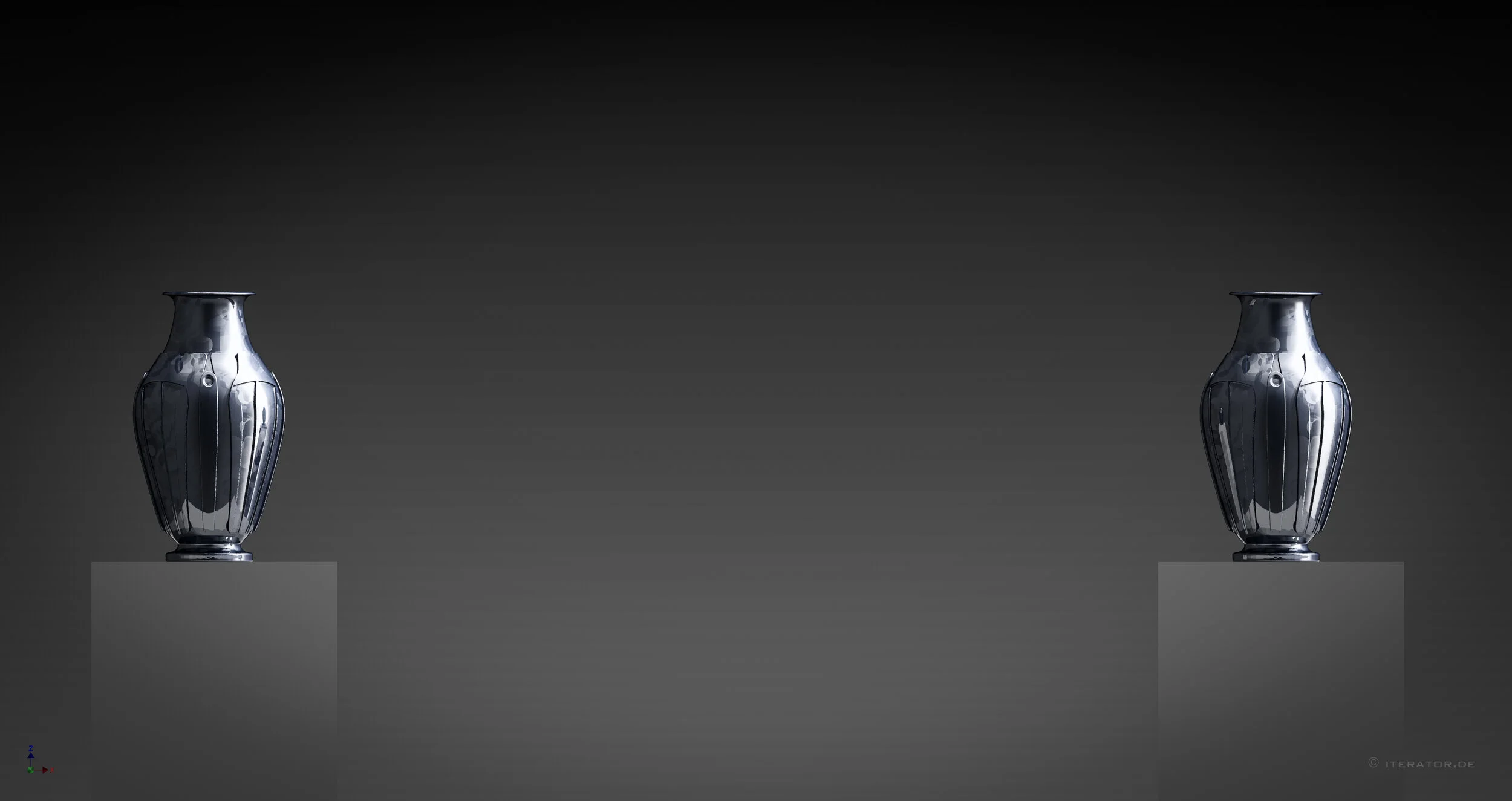PETER BEHRENS VASE REPLICATION
Gone but not forgotten. Germany is famous for its rich design culture spread across all facets of industries. When art historian and avid ceramics collector, Rolf Hinderk Peters, caught wind of an elusive pair of vases possibly created by the famous German designer, Peter Behrens, he set out on a journey to discover their origins and location. Although the journey of discovery came up empty handed, Rolf didn’t stop there. He learned that digital processes could partially replicate the design, so he turned to iterator.de to see if technology could hold a solution…
“I HAVE BEEN A PASSIONATE ENTHUSIAST AND COLLECTOR OF PETER BEHRENS’ WORK FOR THIRTY YEARS. RECENTLY, DR. GIACOMO CALANDRA DI ROCCOLINO FROM HCU HAMBURG ASKED IF I COULD IDENTIFY THE VASES AND THEIR WHEREABOUTS. I WAS IMMEDIATELY HOOKED. SOME SIX MONTHS LATER THE SEARCH WAS UNSUCCESSFUL, BUT I REALLY WANTED SOMETHING VISUALISED SO I CONTACTED ITERATOR.DE”
Rolf Hinderk Peters (Art Historian/Ceramics Expert/Art Collector)
STEP ONE. ANALYSE.
“When Rolf approached me I noticed he had a twinkle in his eye, so I knew he had something inspiring that he wanted to share with me. We made an appointment, and when we sat down together I was awestruck by how passionate and inspired Rolf was by Peter Behrens’ work. His talent was evident and quite literally knew no bounds in the realm of design.
There was a catch however. All I would have to go on was a photo from the Deutsche Kunstgewerbe Ausstellung in Dresden 1906. I knew it was going to be a real challenge, so I jumped at the opportunity.
Using the benches in the background of the photo as a reference, I applied some ergonomics theory together with the average knee height for 20th century Europeans to approximate a height scale factor. I also measured the length of the arches to find the depth scale factor and arrived at an approximate height of the vases.”
— Cameron at iterator.de
The ceramics installation from Peter Behrens at the applied arts exhibition in Dresden 1906
Initial modelling and vase form analysis in CAD
STEP TWO.
MODEL IT.
“I began by using the exterior profile of the vase to create its primary, classic form. Due to the perspective of the photo, it was never going to be 100% accurate but it would be relatively close.
Following this, I performed a series of iterations to layer the additional forms apparent in the picture to the surface of the digital vase. This was the most time consuming portion of the project and took several attempts to capture the forms as best as possible.
I 3D printed the first iteration in a small form factor and met with Rolf to present him the progress. He was impressed but wanted me to take the design further so he booked three more studio hours to see what results could be achieved".”
— Cameron at iterator.de
STEP THREE.
DETAIL IT. RENDER IT. PRINT IT.
“In the final phase I stripped away the basic patterns that were layered on the first iteration of the Behrens vase, rebuilt them to a new depth of detail, and created a series of renderings to present to Rolf. As this was a special project, I 3D printed the final form in larger scale as a gesture of my appreciation to Rolf for asking me to replicate this piece of lost design for him.
We arranged a meeting for delivery and he unwrapped it. He was really happy with the final product! We also went through the renderings together to see how the visualisation had developed. There were some opportunities to add further detail and refine the design, but he was satisfied nonetheless.
Thank you so much for asking me to do this wonderful project with you Rolf. It was an honour and a pleasure to work with you. I hope you will enjoy sharing your experience with colleagues and other experts. I look forward to more challenging projects with passionate people like yourself in the future!”
— Cameron at iterator.de
Final rendering of the Behrens Vases










